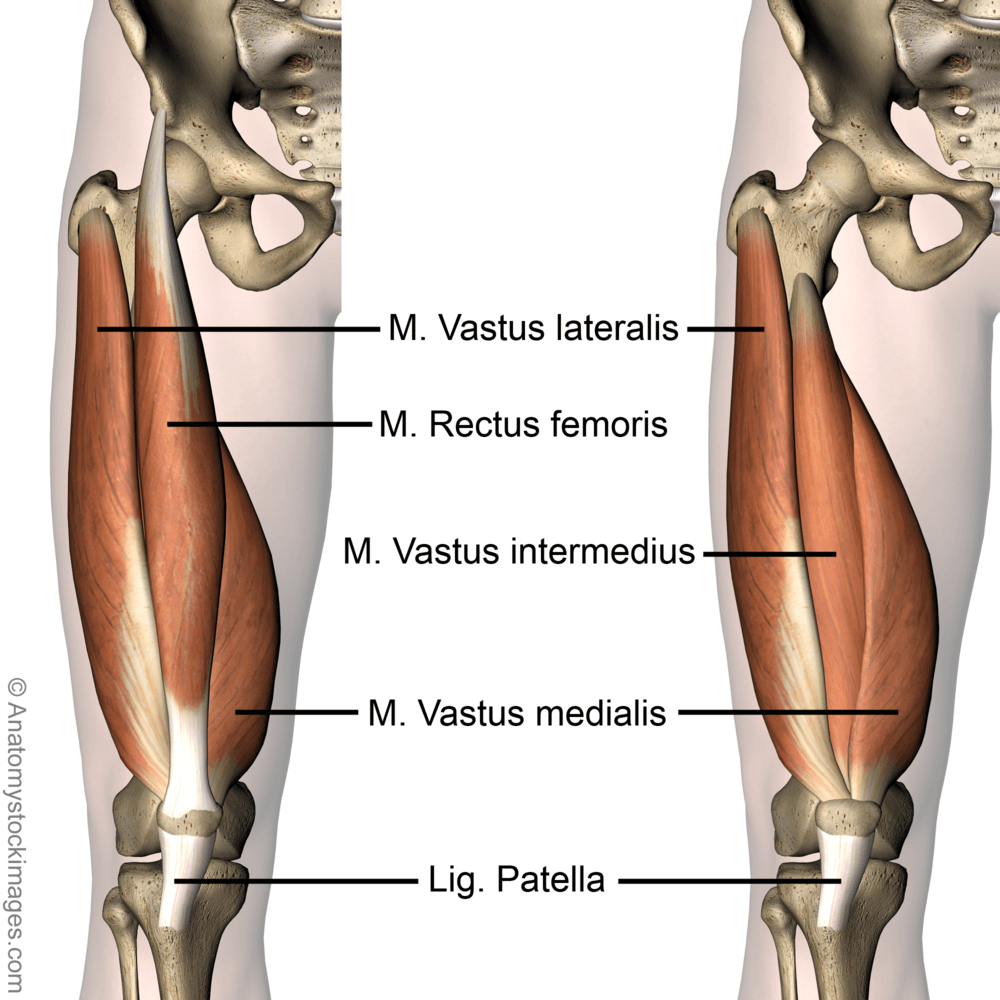
kneemusclesmusculusquadricepsfemorisvastuslateralismedialisintermediusrectusfemoris
The vastus lateralis ( / ˈvæstəs ˌlætəˈreɪlɪs, ˈræ -/ ), also called the vastus externus, [1] is the largest and most powerful part of the quadriceps femoris, a muscle in the thigh. Together with other muscles of the quadriceps group, it serves to extend the knee joint, moving the lower leg forward. It arises from a series of flat.

Functions of the vastus lateralis muscle (preview) Human 3D Anatomy Kenhub YouTube
The vastus lateralis (VL) is a unipennate muscle and a member of the anterior compartment of the thigh along with the sartorius, quadriceps femoris, rectus femoris (RF), vastus medialis (VM), and vastus intermedius (VI) muscles. The VL is 1 of the 4 component muscles of the quadriceps muscle group: rector femoris, vastus lateralis, vastus medialis, and vastus intermedius.
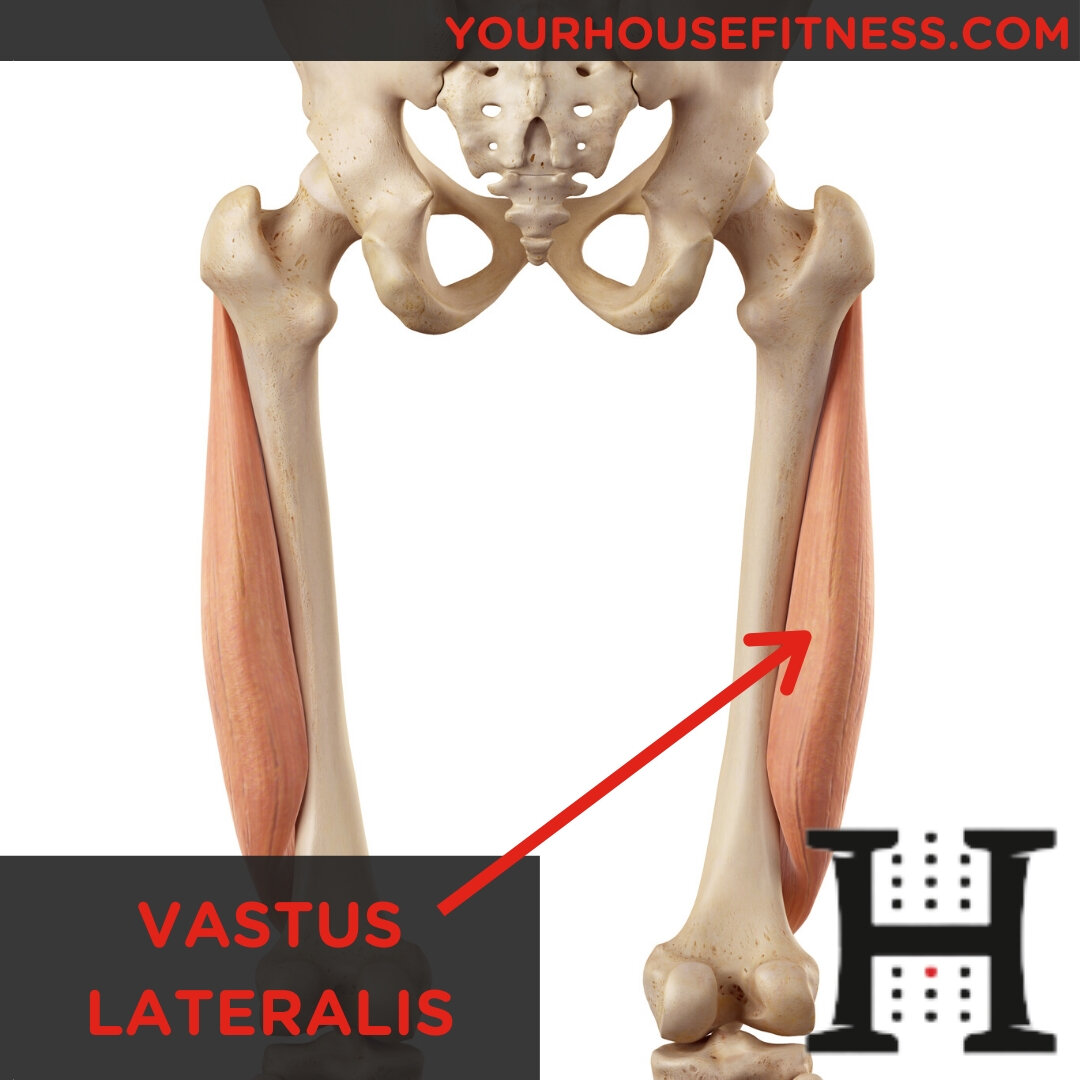
Muscle Breakdown Vastus Lateralis
SUMMARY. Vastus lateralis. Origin. Superior portion of intertrochanteric line, anterior and inferior borders of greater trochanter, superior portion of lateral lip of linea aspera, and lateral portion of gluteal tuberosity of femur. Insertion. Lateral base and border of patella; also forms the lateral patellar retinaculum and lateral side of.

Vastus Lateralis Muscle Anatomy Muscles isolated on white 3D illustration Stock Photo Alamy
The main muscle bulk of vastus lateralis is found on the upper half of the lateral side of the thigh. It then forms a broad tendon which narrows as it approaches the patella (kneecap). Here, the vastus lateralis tendon inserts into one of the other quadriceps tendons ( rectus femoris ) and the outer side of the patella.

Vastus Lateralis Anatomy Origin, Insertion & Action YouTube
The vastus medialis plays a role in knee stability and helps prevent unwanted lateral movements. Vastus intermedius - located between vastus medialis and vastus lateralis, this long muscle really stands out at the front of your thighs. It's a very powerful knee extensor and makes up a lot of the bulk of your anterior thighs. Vastus.

Vastus Lateralis Trigger Points
The vastus lateralis. This muscle—which Stretch*d program director Jeff Brannigan calls "the most powerful" of the bunch—specifically works to extend the lower leg and allow the body to rise.
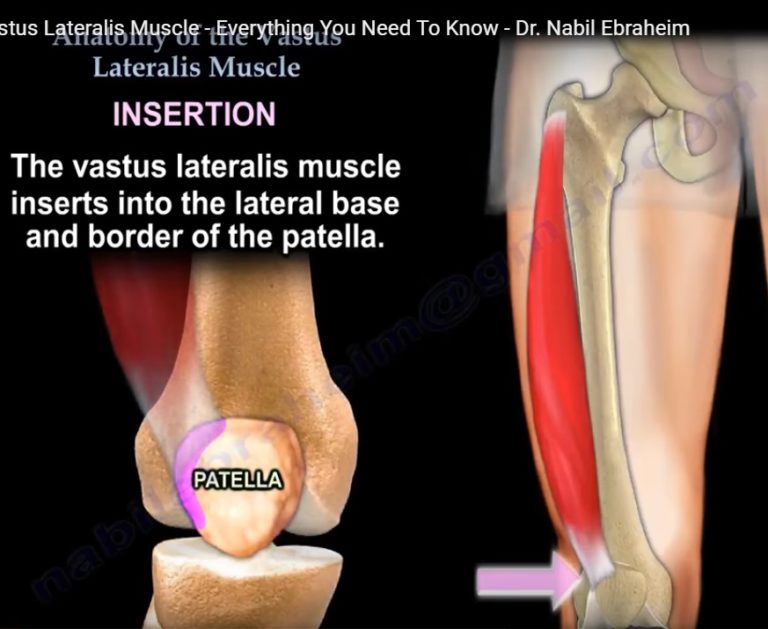
Anatomy Of The Vastus Lateralis Muscle —
The vastus lateralis is a muscle located on the lateral, or outside, part of your thigh. The muscle is one of the four quadriceps muscles and is the largest muscle of that group. The function of the vastus laterails is to work with the other quad muscles to help extend your knee joint. It is also active in maintaining thigh and kneecap position.

Vastus Lateralis Stock Photos, Pictures & RoyaltyFree Images iStock
The proximal part of rectus femoris muscle lies deep to tensor fasciae latae, sartorius and iliacus muscles.All the contents of the anterior compartment of the thigh lie deep to rectus femoris. These include the capsule of the hip joint, vastus intermedius, anterior margins of vastus lateralis and vastus intermedius, lateral circumflex femoral artery and some branches of the femoral nerve.
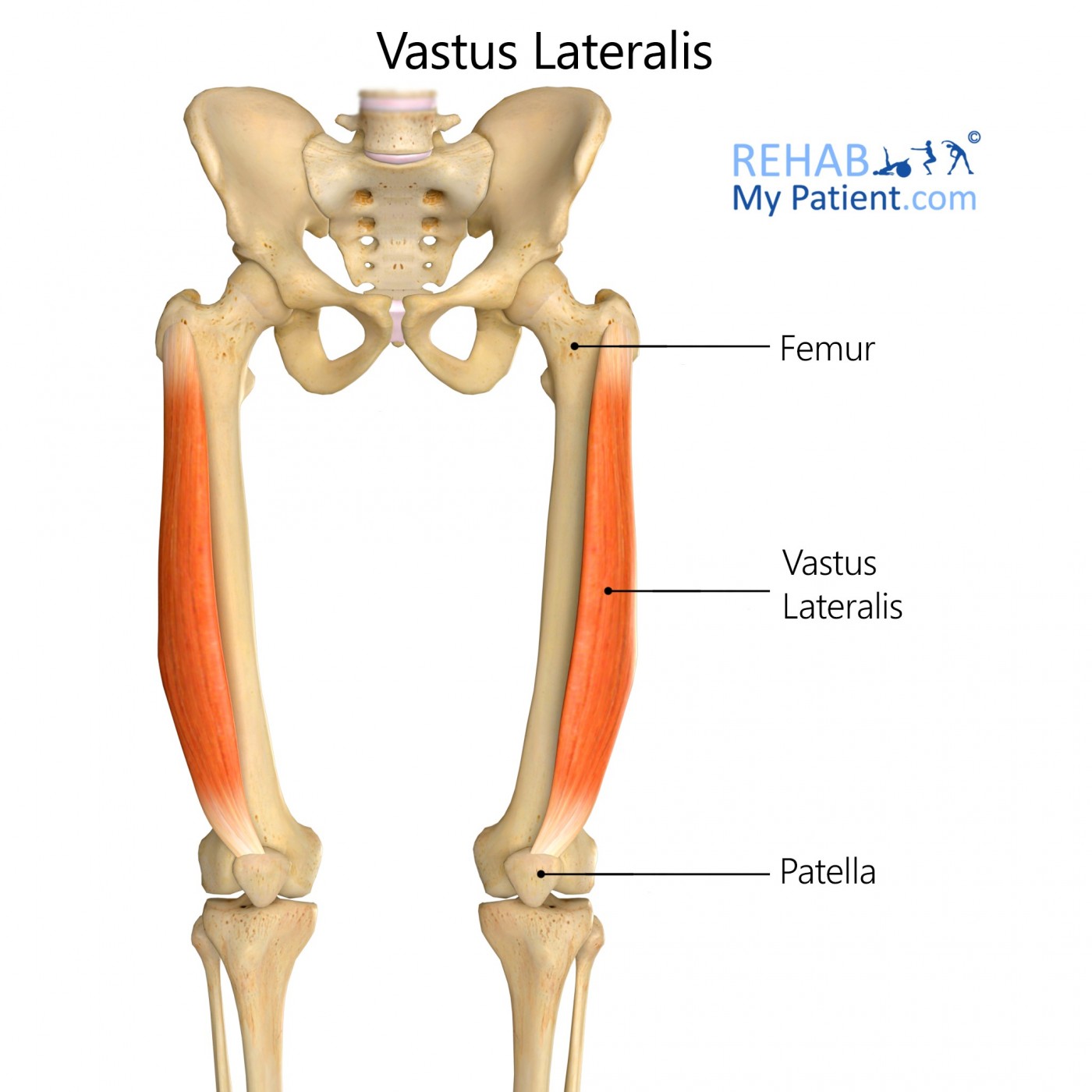
Vastus Lateralis Rehab My Patient
The vastus muscles are three of the four muscles that make up the quadriceps femoris muscle of the thigh.The three muscles are the vastus intermedius, the vastus lateralis, and the vastus medialis located in the middle, on the outside, and inside of the thigh, respectively. The fourth muscle is the rectus femoris muscle a large fleshy muscle which covers the front and sides of the femur.
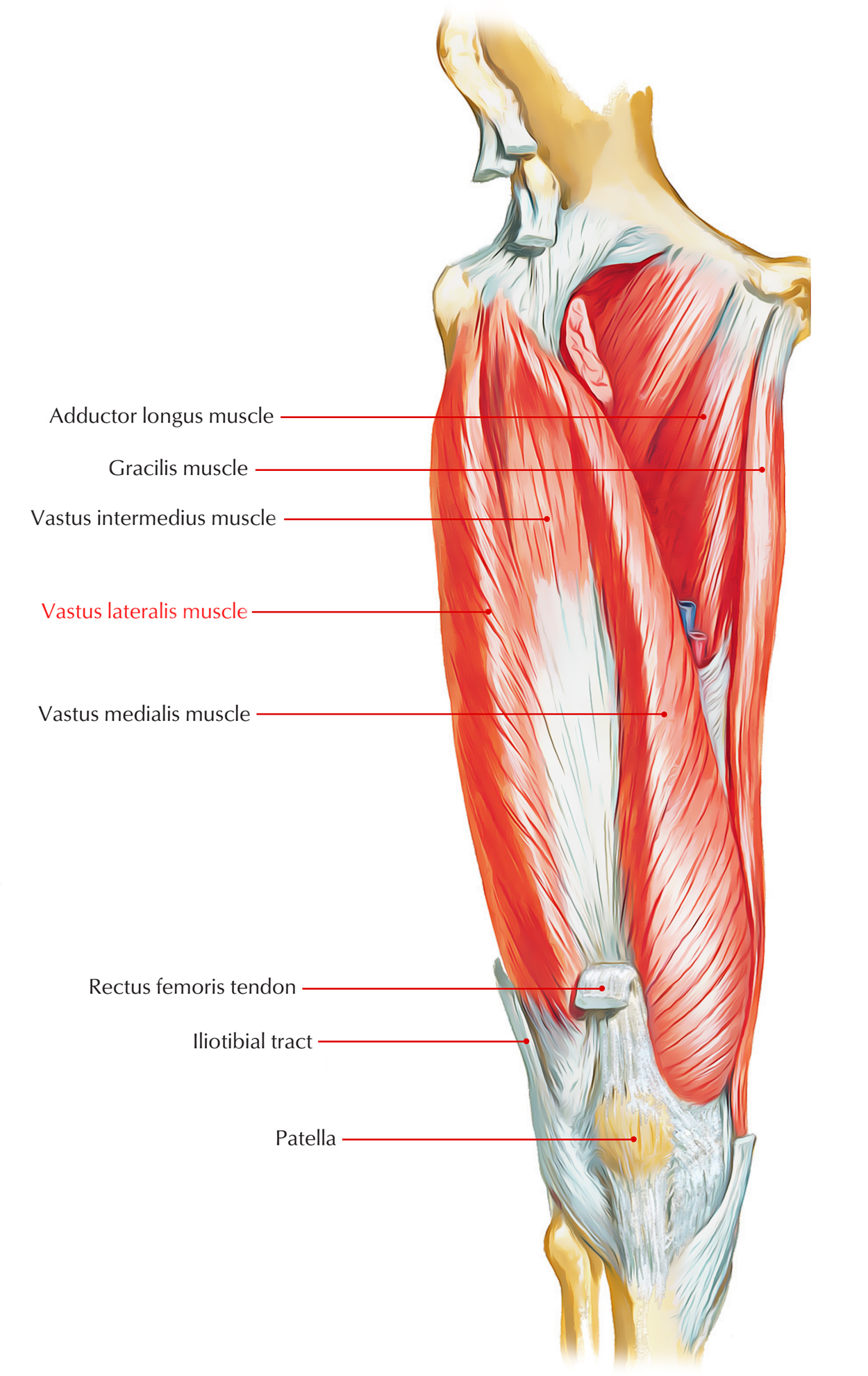
Vastus Lateralis Earth's Lab
While much research has centred around the relationship between vastus medialis and anterior knee pain, little is known about the most lateral of the quadriceps muscle group, vastus lateralis (VL). Knowledge of the anatomical organization of VL is not only necessary to understand its precise function, but to also assist in the development of clinical and biomechanical models of knee dysfunction.
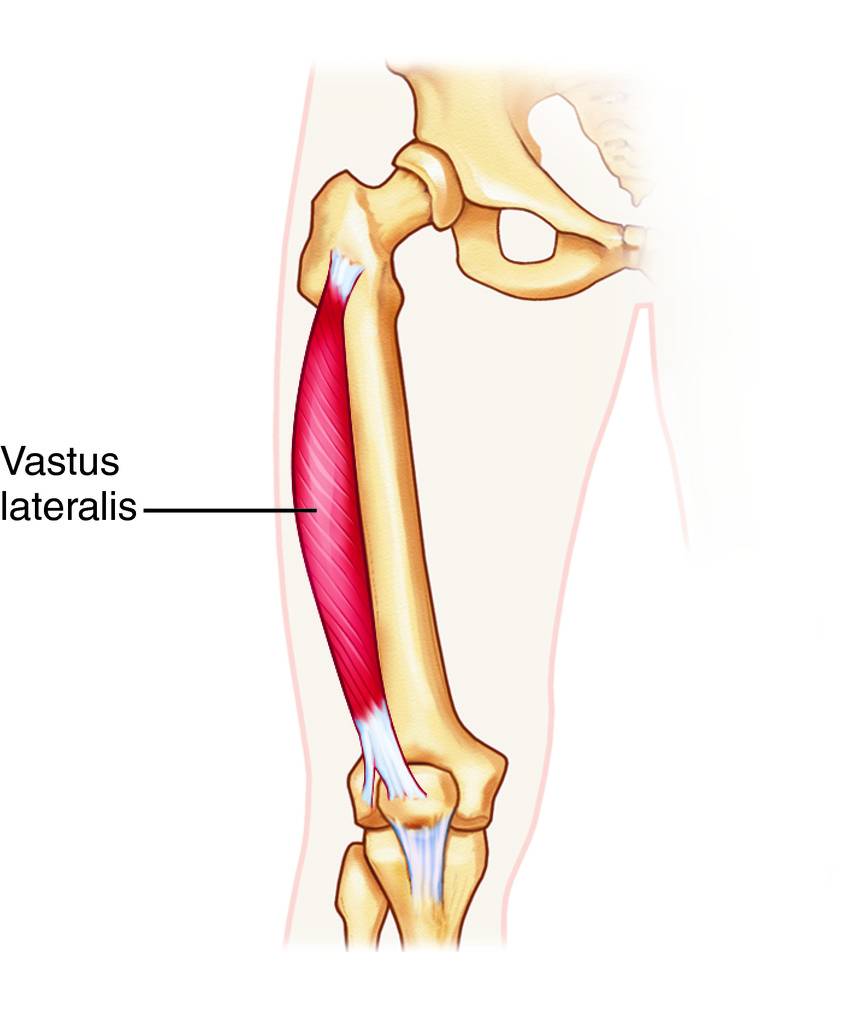
Full Size Picture vastus lateralis.jpg
The muscle lies medial to the gluteus maximus and is situated lateral to the vastus intermedius muscle. Origin. The vastus lateralis originates from the greater trochanter, upper part of the intertrochanteric line, superior aspect of the lateral lip of the linea aspera and gluteal tuberosity of the femur. Insertion

7 Best Vastus Lateralis Exercises (with Pictures!) Inspire US
The vastus lateralis and vastus medialis muscles play an important role in maintaining patellar tracking. •. Innervation: Femoral nerve (L2-L4). •. Referred pain: The vastus lateralis muscle refers pain throughout the full length of the lateral side of the thigh from the iliac crest to at least midway the lower leg. •.

vastus lateralis origin and insertion Google Search Human body systems, Physical therapy
The vastus lateralis muscle is located on the side of the thigh. This muscle is the largest of the quadriceps group (often called quads) which also includes the rectus femoris, the vastus.

Vastus lateralis muscle, illustration Stock Image F029/5044 Science Photo Library
Definition. Insertion: Patella and Tibial tuberosity via the Patellar ligament. The Vastus lateralis ( Vastus externus) is the largest part of the Quadriceps femoris. It arises by a broad aponeurosis, which is attached to the upper part of the intertrochanteric line, to the anterior and inferior borders of the greater trochanter, to the lateral.

Quadriceps femoris muscle Vastus lateralis, Quadriceps femoris, Muscle
The vastus lateralis muscle is located on the lateral side of the thigh. This muscle is the largest of the quadriceps which includes: rectus femoris, vastus intermedius, and vastus medialis.Together, the quadriceps act on the knee and hip to promote movement as well as strength and stability. They provide power for and absorb the impact of daily activities such as walking, running, and jumping.
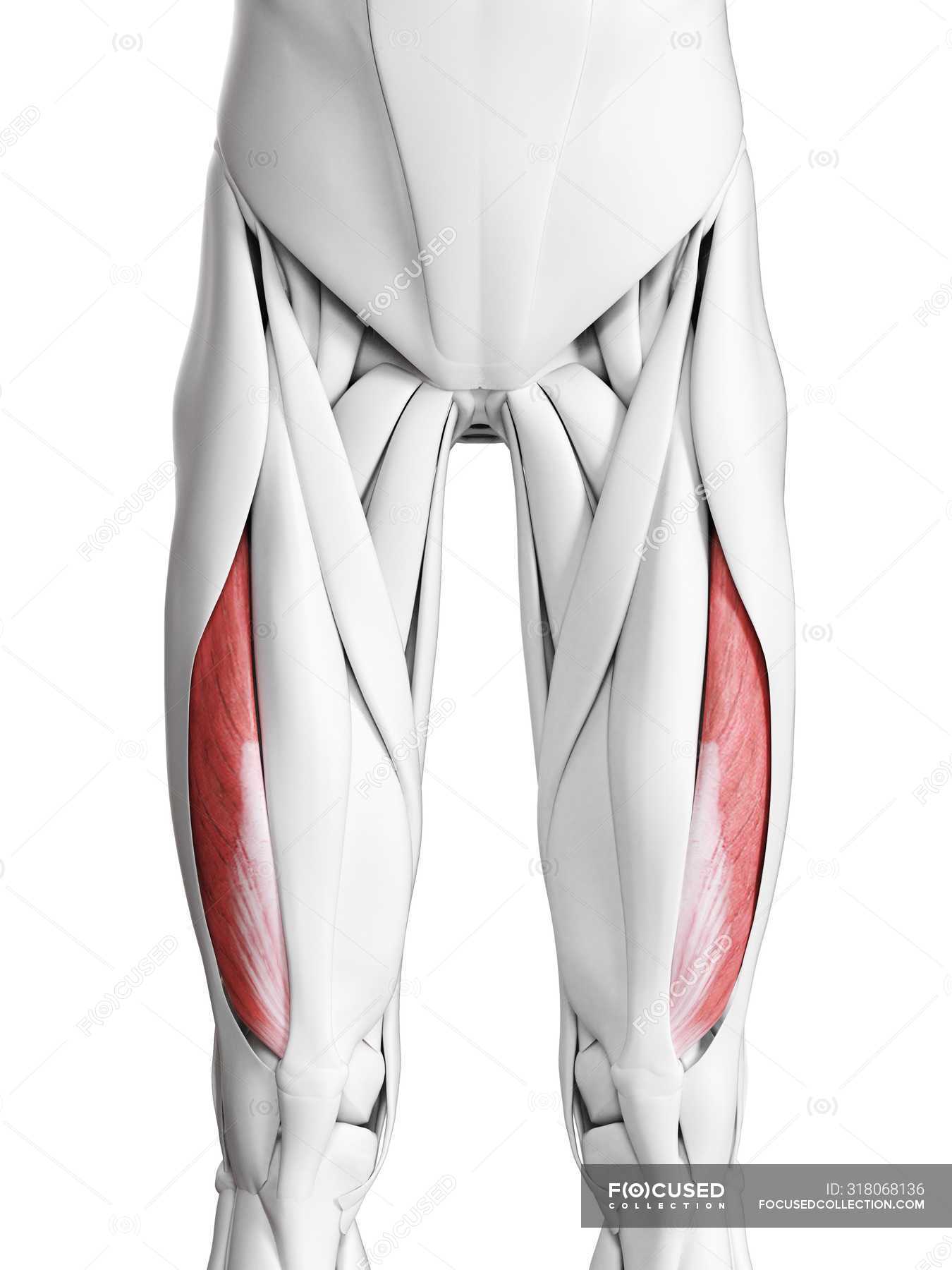
Male anatomy showing Vastus lateralis muscle, computer illustration. — medicine, digital Stock
The vastus lateralis, also known as the vastus externus, is a prominent muscle located on the anterolateral (front, outer) side of the thigh. It is the largest and most powerful of the four quadriceps muscles, a group of muscles responsible for extending the knee joint (when shortening) and stopping or slowing down knee flexion (when elongating). As the primary extensor of the knee, the vastus.